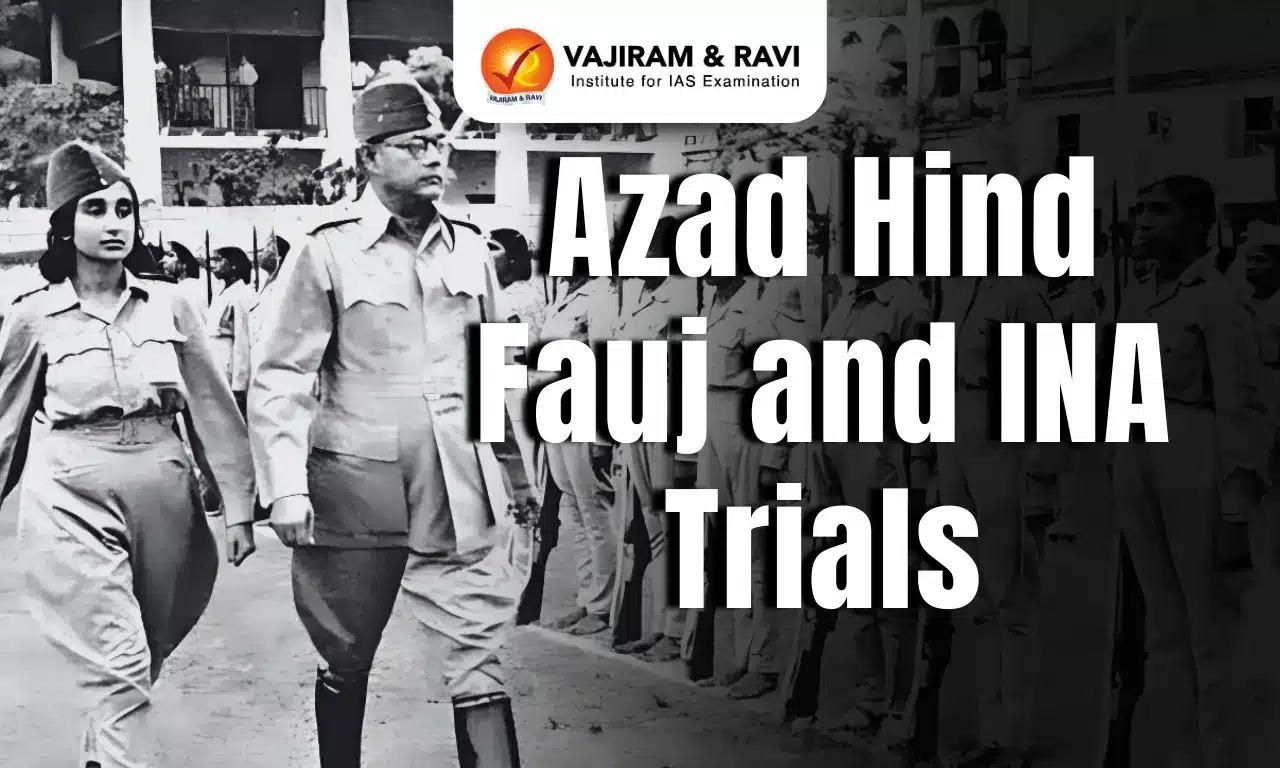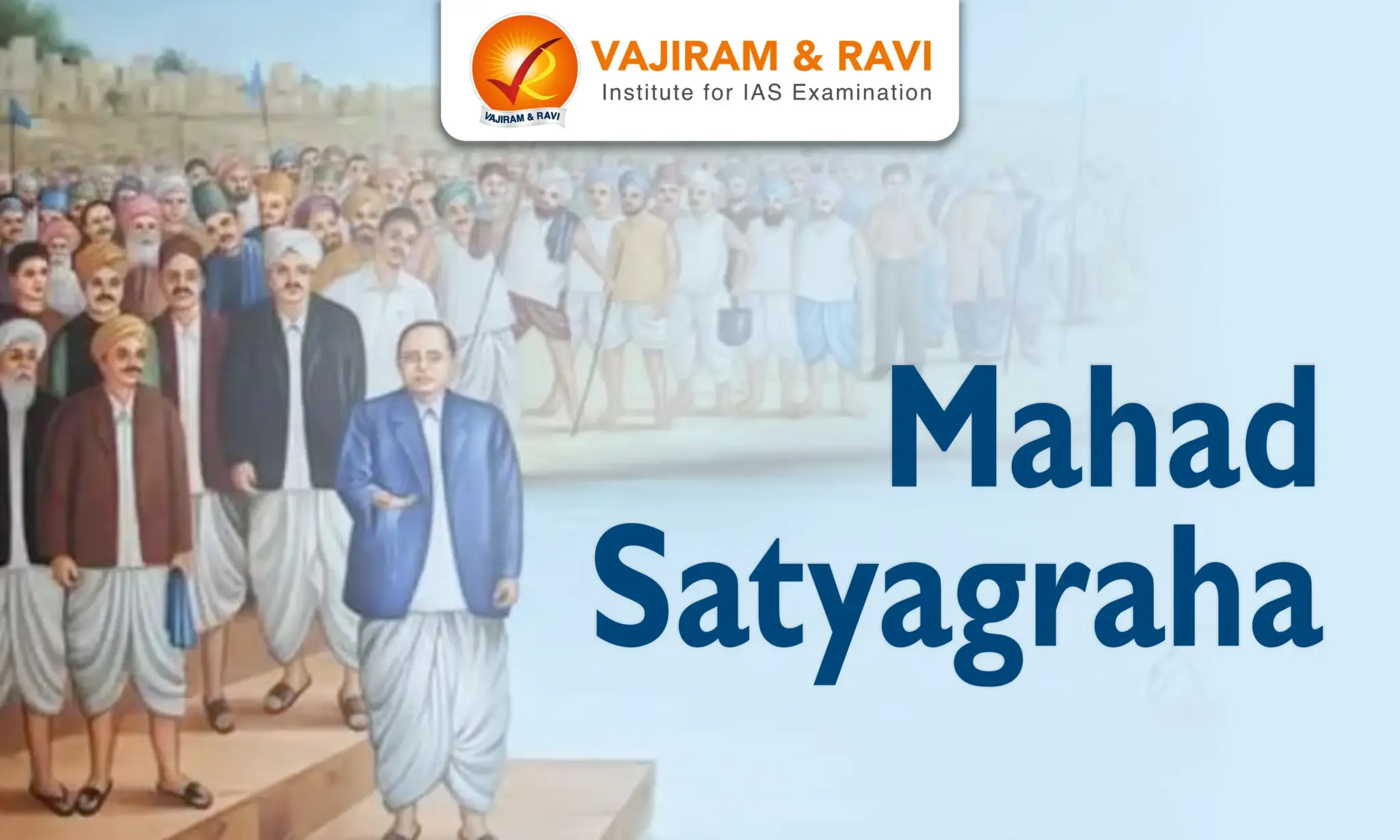The revival of the Indian National Army (INA) or Azad Hind Fauj under the leadership of Netaji Subhas Chandra Bose constituted a momentous part of India's freedom struggle. During World War II, Bose envisioned leveraging the global turmoil to launch a militant nationalist revolt against British rule in India.
The INA emerged as a powerful symbol of India's resolve to fight for independence by any means necessary, including violent confrontation if needed. Its secular nationalist ideology bridged religious, regional and ethnic divides, forging a sense of unity against the imperial oppressor. Along with the Quit India Movement, the INA's remarkable saga generated a revolutionary fervour that re-energized the independence movement.
Subhash Chandra Bose and Revolt against British Rule
Subhash Chandra Bose, a leader of the Indian National Congress, advocated uncompromising and militant resistance against the British instead of moderation or compromise with the colonial regime.
- Bose escaped British house arrest in Calcutta in January 1941 and travelled to Germany to seek Hitler's support in forming an Indian army to fight the British.
- With the Nazi regime focused on Europe, Bose next moved to Japan, which had expanded its imperial interests in South East Asia after attacking Pearl Harbor in December 1941.
- Bose envisioned leveraging the World War to mount a nationalist revolt against the British in India through a liberation army raised with Axis support.
- He rejected race theories, considering all Asian peoples as members of one family who should unite to overthrow colonial dominance in Asia.
Indian Independence League under Rash Behari Bose
Rash Behari Bose, a veteran Indian revolutionary living in exile in Japan, headed the Indian Independence League (IIL). In coordination with Japanese authorities, the IIL sought to nurture anti-colonial nationalism among expatriate Indians to weaken British hold in Asia.
- After the fall of Singapore in February 1942, the IIL formed links with around 45,000 Indian troops who had surrendered to the Japanese after fighting for the British. It urged them to join the freedom struggle.
- The IIL provided protection to Indian civilian settlers and Prisoners of War (PoWs) against Japanese excesses in territories occupied by the Japanese army. These factors helped in mobilising support.
First INA under Mohan Singh
The first Indian National Army (INA) was formed in September 1942 under Captain Mohan Singh. It comprised around 12,000 Indian PoWs willing to secure independence from British rule in alliance with Japanese assistance.
Foundation of thе First INA
- Thе Japanеsе sought cooperation with nationalists in Southeast Asia, including Indians, to hеlp thеm in thеir war еffort.
- Giani Pritam Singh of IIL initiated contact with thе Japanеsе, leading to cooperation.
- Captain Mohan Singh was taskеd with organising an Indian national army using Indian prisonеrs of war.
- Mohan Singh's lеadеrship and thе promisе of control by Indian officеrs ralliеd Indian soldiеrs to join thе INA.
- Thе rеasons for Indian soldiеrs and civilians joining thе INA includеd nationalism, fееlings of bеtrayal by thе British, racial discrimination, and fеar of Japanеsе atrocitiеs.
- However, disagreements and distrust arose between Mohan Singh and IIL's Council of Action under Rash Behari Bose over control of the army's leadership and roles.
- Conflict also emerged over policies of the Japanese military administration in occupied territories. Mohan Singh refused to provide INA soldiers for Japan's campaign in Burma against the British. This led him to resign and dissolve the first INA by December 1942.
Revival of INA under Subhas Chandra Bose
In July 1943, Bose arrived in Singapore and took leadership of the INA, reshaping it as a nationalist force rather than just supporting Japanese military goals.
The Azad Hind Fauj, or second INA, was formed by unifying the residual soldiers of the first INA with the large influx of Indian civilian volunteers in Southeast Asia electrified by Bose's leadership and call to arms against British oppression.
Structure and Composition of INA
- Unlike the first INA, which had multiple centres of authority, the second INA, under Bose's leadership, was solely committed to him.
- Ethnic and regional loyalties were subsumed under national sentiments through mixed regiments and political training. The practice of naming regiments after nationalist leaders continued, fostering a sense of unity.
- The INA was structured into three brigades - Gandhi, Azad and Nehru. At its peak strength, the INA had around 60,000 troops, including the Rani Jhansi regiment comprising women soldiers headed by Captain Lakshmi Swaminathan (Lakshmi Sehgal).
- Motivated civilian volunteers from the Indian Independence League were also attached to the INA formations. The soldiers took an oath of loyalty to both Netaji and the national cause.
- The INA had its own currency, postage stamps and symbols portraying a vision of a liberated India.
- Subhas Chandra Bose, through the first national army, introduced the Indian tricolour as the national flag and Tagore's song 'Jan Gan Man Adhinayak' as the national anthem.
- The INA flag with the springing tiger symbol and the motto 'Ittefaq, Etemad, Qurbani' inspired nationalist sentiment.
- He also established 'Jai Hind' as the national greeting, cultivating unity among all Indians regardless of caste and creed.
Military Campaign of INA as Part of Azad Hind Fauj
- The Azad Hind Fauj, led by Subhas Bose, controlled the Andaman islands and parts of Manipur briefly.
- In 1944, the INA attempted to invade India from Imphal and Kohima in Northeast India, moving down the coast toward Burma. However, this campaign ultimately ended in failure.
- However, the defeat of Japan and Germany in World War II dashed its hopes as INA lacked the resources to continue independently. Its major ambition of creating a march on Delhi remained unfulfilled.
- While the INA did not achieve its military objectives, it made significant political stridеs. Bosе's lеadеrship and thе INA's commitmеnt to thе causе of Indian indеpеndеncе inspirеd gеnеrations.
- The INA played a pivotal role in building a collеctivе consciousnеss of Indian identity and thе dеsirе for frееdom.
End of World War and Trial of INA Soldiers
After World War II ended in 1945 with the defeat of the Axis powers, the British conducted a series of court-martial proceedings known as the INA trials or Red Fort trials between November 1945 and May 1946.
These trials involved several officers of the Indian National Army (INA) who were charged with various offences, including treason, torture, murder, and abetment to murder, during their association with the INA during World War II.
- Early Trials of INA Personnel:
- In 1943 and 1944, courts-martial were held in India for former members of the British Indian Army who had joined the INA or supported its activities.
- Initially, these trials did not receive much attention or sympathy from the public and were based on charges of "Committing a civil offence" as per the Indian Army Act and Burma Army Act.
- The primary charge in these earlier trials was "Waging War against the King," as per the Indian Penal Code.
- Public INA Trials and the Red Fort:
- Due to the increasing number of INA troops captured by Commonwealth forces towards the end of the Burma Campaign, a selective approach was adopted to prosecute those accused of the gravest allegations.
- The first notable public trial involved INA officers Shah Nawaz Khan, Prem Sahgal, and Gurbaksh Singh Dhillon.
- Recognising the political significance of these trials, they were conducted at the iconic Red Fort in Delhi, attracting widespread attention.
- INA Defence Committee:
- The Indian National Congress played a crucial role in making the release of these three defendants a significant political issue during the 1945-46 independence agitation.
- The INA Defence Committee was established by Congress in 1945 to provide legal defence to the accused INA officers.
- Besides legal defence, the committee coordinated information about INA troops held captive and arranged relief efforts for them.
- Eminent lawyers of the time, including Bhulabhai Desai, Asaf Ali, Sharat Chandra Bose, Tej Bahadur Sapru, and Kailash Nath Katju, were part of this committee.
Impact of INA Trials on Nationalist Sentiments
The INA shook the foundations of the British Empire in India. It demonstrated the possibility of a united armed resistance movement transcending religious and ethnic divides in the cause of freedom.
- The Red Fort trials introduced many Indians to the INA's role in the fight for independence, generating sympathy for the INA nationwide.
- Demonstrations in solidarity with the captured troops began to emerge in different parts of India.
- The Congress recognised the widespread support for INA soldiers as an opportunity to rekindle enthusiasm for independence.
- The INA Defense Committee presented a robust defence, arguing that the actions of the INA troops were within the legal framework of the Indian National Army Act, exempting them from the Indian Penal Code and the Indian Army Act.
- In 1946, public pressure led to the release of the soldiers, spurring nationalist sentiments.
- The experience and stories of sacrifice also impacted the Royal Indian Navy mutiny in 1946, which further weakened British control.
- Despite compelling arguments by the defence, the three INA members were found guilty of waging war but were not sentenced to death. Instead, they were dismissed from service and sentenced to transportation for life, which was later remitted.
- Upon their release, the three officers were hailed as heroes, and Congress wholeheartedly supported their celebration.
- In response to the explosive situation arising from the INA trial and the growing nationalist sentiments, the British government expedited the idea of transferring power to India.
- To decide the modalities of this transfer, the Cabinet Mission was dispatched, marking a crucial step toward India's eventual independence.
- The INA showed the possibility of armed resistance against colonial rule. This inspired many later anti-colonial struggles in Asia and Africa.
Royal Indian Naval Mutiny
The Royal Indian Navy (RIN) mutiny of 1946, significantly contributed to the anti-colonial struggle in India. The World War II's impact on Indian soldiers led to the RIN's expansion, including recruits from diverse backgrounds.
- Serving abroad exposed them to democratic principles, prompting questions about India's colonial status and realising their capabilities.
- Post-war challenges like demobilisation, unemployment, and British racism led to minor mutinies and labour movements.
- Memories of the 'Quit India' movement and INA trials fueled nationalist sentiments and anti-colonial attitudes.
- The mutiny began at HMIS Talwar in Bombay on February 18, 1946, when 1,500 ratings demanded better conditions. It spread to other locations, gaining public support and evolving into a call for freedom from British rule.
- Ultimately, on February 23, 1946, all ships surrendered, leaving a lasting legacy in India's struggle for independence. The RIN mutiny, alongside other movements, weakened British rule in India.
Last updated on December, 2025
→ Check out the latest UPSC Syllabus 2026 here.
→ Join Vajiram & Ravi’s Interview Guidance Programme for expert help to crack your final UPSC stage.
→ UPSC Mains Result 2025 is now out.
→ UPSC Notification 2026 is scheduled to be released on January 14, 2026.
→ UPSC Calendar 2026 is released on 15th May, 2025.
→ The UPSC Vacancy 2025 were released 1129, out of which 979 were for UPSC CSE and remaining 150 are for UPSC IFoS.
→ UPSC Prelims 2026 will be conducted on 24th May, 2026 & UPSC Mains 2026 will be conducted on 21st August 2026.
→ The UPSC Selection Process is of 3 stages-Prelims, Mains and Interview.
→ UPSC Result 2024 is released with latest UPSC Marksheet 2024. Check Now!
→ UPSC Prelims Result 2025 is out now for the CSE held on 25 May 2025.
→ UPSC Toppers List 2024 is released now. Shakti Dubey is UPSC AIR 1 2024 Topper.
→ UPSC Prelims Question Paper 2025 and Unofficial Prelims Answer Key 2025 are available now.
→ UPSC Mains Question Paper 2025 is out for Essay, GS 1, 2, 3 & GS 4.
→ UPSC Mains Indian Language Question Paper 2025 is now out.
→ UPSC Mains Optional Question Paper 2025 is now out.
→ Also check Best IAS Coaching in Delhi
Azad Hind Fauj and INA Trials FAQs
Q1. When was the first INA formed?+
Q2. Why did Subhas Chandra Bose form the Azad Hind Fauj?+
Q3. Who was the leader of the Azad Hind Fauj?+
Q4. What was the strength of the INA at its peak?+
Q5. Where did the INA fight major campaigns?Where did the INA fight major campaigns?+

















